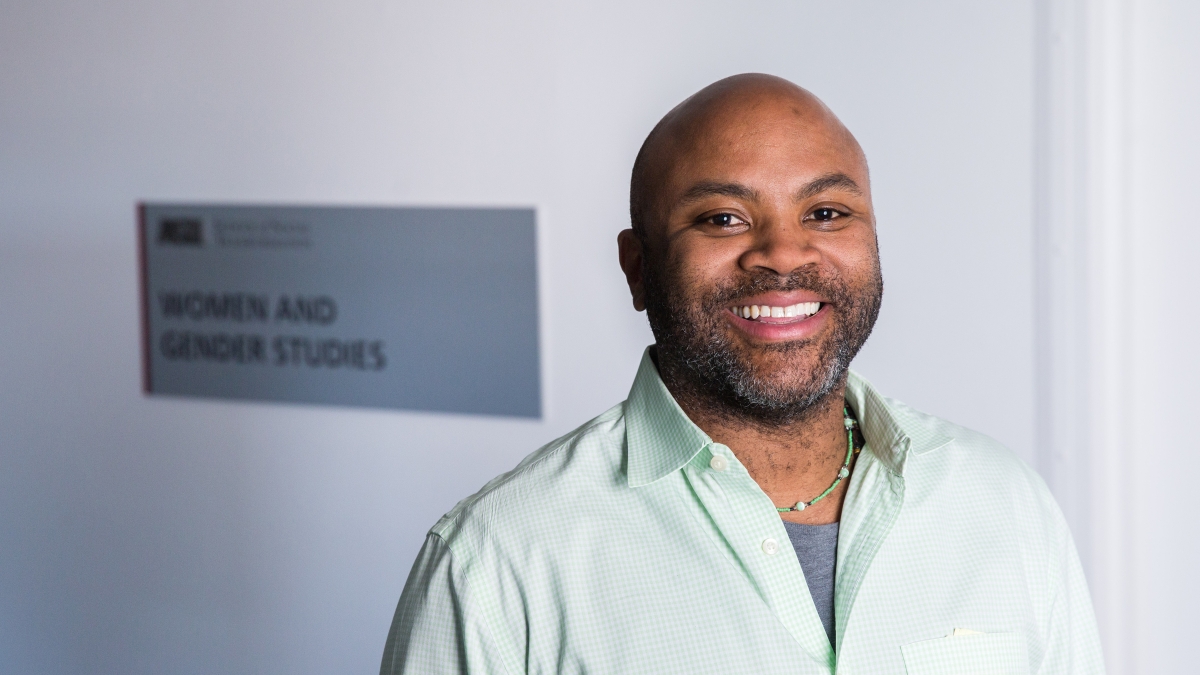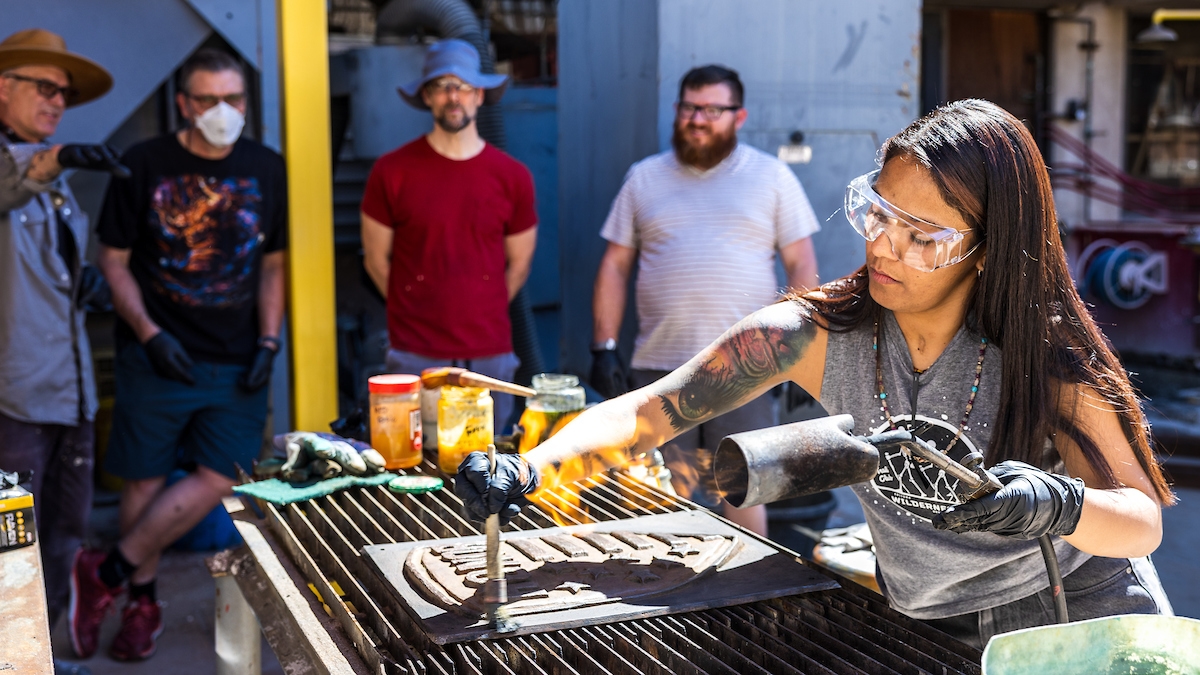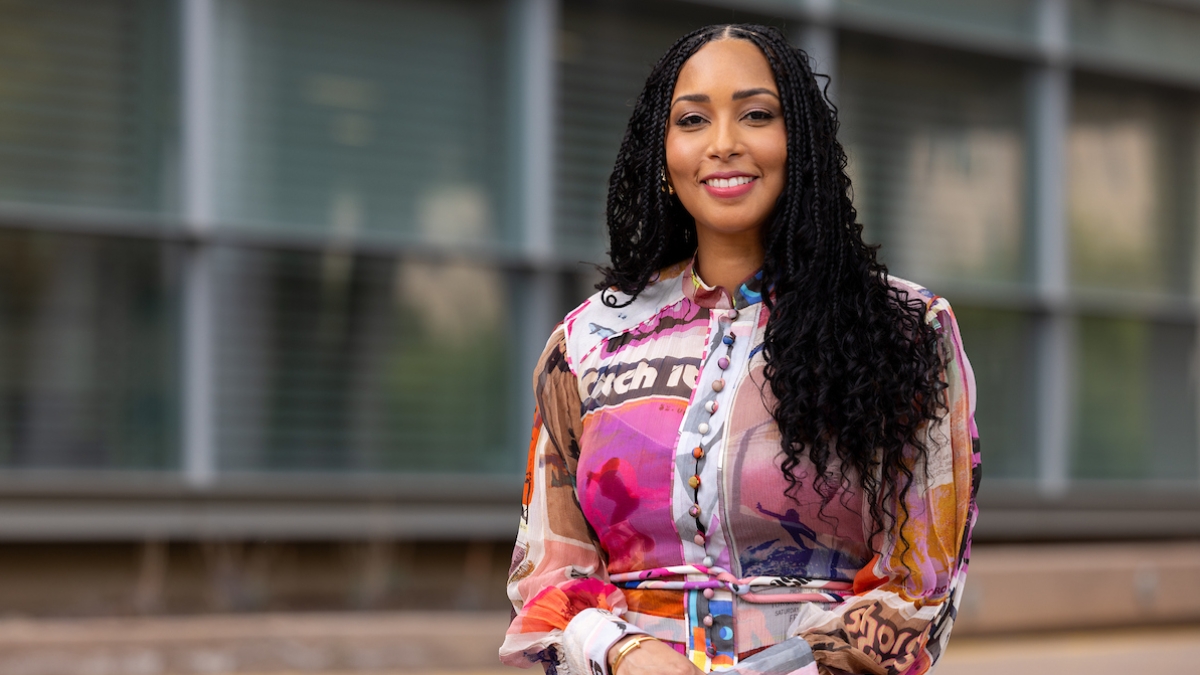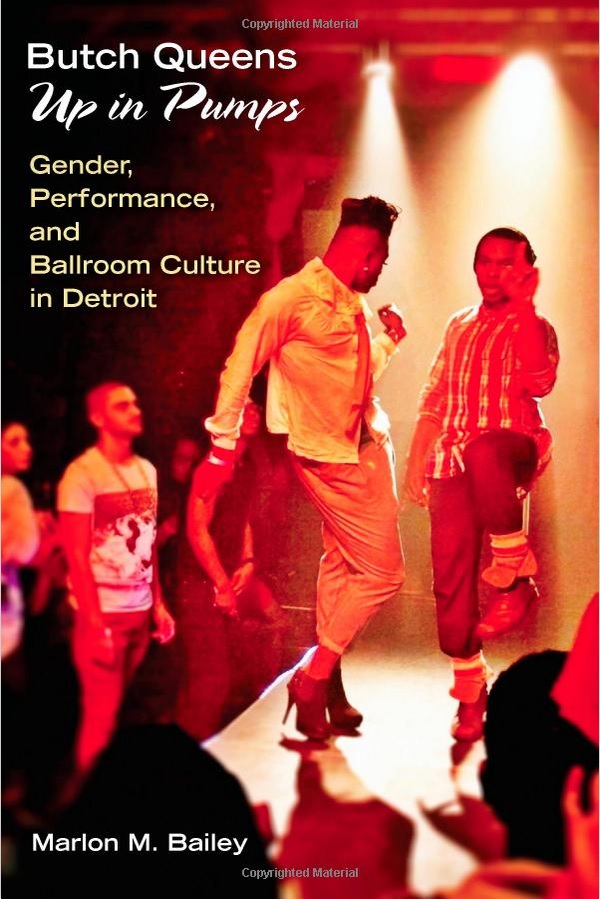All the world's a stage
New ASU faculty Marlon Bailey studies performance as a means of identity, cultural formation

When the June 2015 issue of Vanity Fair hit the stands last summer featuring Caitlyn Jenner wearing an ivory bodysuit on its cover, the magazine caused a maelstrom. Never before had so much public attention been given to transgender issues, and everybody had an opinion.
While many expressed shock and confusion, the idea of a natural-born male choosing to gender identify as female is nothing new to Arizona State University associate professor of women and gender studies Marlon Baileypictured above, photo by Deanna Dent/ASU Now.
One of the newest faculty members in the School of Social Transformation, Bailey has done extensive research on gender and sexuality. Still, in a society that has an almost compulsory need to define its constituents, he understands the reaction to Jenner’s revelation.
“When we’re dealing with this world where everything is in these boxes, sometimes those who venture outside of the boxes, they’re not legible; we don’t know what to do with them,” he said.
Active in theater from a young age, Bailey went on to attend a performing arts high school in his native Detroit, and spent much of his collegiate career researching black theater, in particular. After receiving his master's in fine arts in acting from West Virginia University in 1994, he taught in theater departments at various universities, including Macalester College in Saint Paul, Minnesota, and the University of Michigan-Flint.
It was around that time that Bailey decided to take stock of his academic career, and discovered that he felt limited by his master's, which only allowed him to teach in certain departments.
“I always had an interest in research and knew I wanted to work on some aspect of black LGBT life,” he said.
So he decided to pursue his doctorate at the University of California-Berkeley on a whim. Upon applying, Bailey was pleasantly surprised to discover that among UC Berkeley’s faculty at the time was well-known black feminist Barbara Christian. He and Christian spoke often throughout his application process, and he was excited to begin working alongside her. Unfortunately, she passed away during his first semester at Berkeley.
Undeterred, Bailey forged ahead in pursuit of his academic goals.
“I wanted to look at the ways in which, for black LGBT communities, race, gender, sexuality and class intersect and shape their experiences. And I wanted to do it from an interdisciplinary framework, through performance, because that was my background,” he said.
Over time, he became interested in exploring how performance can be a means of communicating one’s experiences and identity.
“When I started studying performance theory, that’s when I got into gender performance in everyday life,” Bailey said, “and performance of sexual identities, and performances as part of a cultural formation, which is what my book ended up being about; a study of this particular black, LGBT cultural formation that relies heavily on performance as a core feature of the way in which it evolved, the way in which it practices, celebrates, affirms, critiques.”
His 2013 book, “Butch Queens Up in Pumps: Gender, Performance, and Ballroom Culture in Detroit,” (pictured at left) received the Alan Bray Memorial Book Prize from the GL/Q Caucus at the Modern Language Association. It also led him to another of his research interests, performance in relation to HIV/AIDS prevention among black LGBT communities.
“A dimension of my ethnography looks at the impact of HIV on the ballroom community and how they respond to the HIV/AIDS epidemic,” Bailey said. “So I’m bringing performance to bear on a social problem that this community, I argue, deals with through performance.”
By that point, he was teaching at the University of Indiana and was called upon by the state of Indiana to conduct an HIV/STD/STI viral hepatitis needs assessment for men who have sex with men. The yearlong study ended up in a 300-plus page report, which he handed over to the Indiana State Department of Health to be used as a reference for improving HIV prevention and treatment services.
Out of that came the basis for his forthcoming second book, “Black Gay Sex and Subjectivity in the Age of AIDS.” Funded by a National Institutes of Health flow-through grant to the Center for AIDS Prevention Studies, Bailey’s pilot study for the book looks at what it means to be black and gay. Part of finding that out requires looking at how black gay men’s relationships with their parents impacts their sexual development, something Bailey laments is understudied.
“Part of what I would like this research to do at some point is to provide some way to create a knowledge base for some way of helping parents, particularly black parents, deal with their black children who are gay or lesbian or transgender or queer,” he said.
His research into the subject will continue at his new home, ASU, where he found himself after his colleague and close friend Rashad Shabazz encouraged him to apply. Shabazz himself recently joined the School of Social Transformation as an associate professor of justice studies.
“Throughout our years working together, we would say, ‘Wouldn’t it be great if we were at the same university?’ but we thought that would never happen. And now here it is, it happened,” Bailey said.
“I’m still trying to grapple with what has happened. First of all, I would have never imagined that I would be in Arizona. I would have never imagined that I would be in such a school that is so perfect for what I do, what I believe in, how I understand knowledge production … it’s interdisciplinarity on steroids.”
As a sexuality scholar, Bailey asserts that interdisciplinarity is imperative to the kind of work he does:
“Women and gender studies has been a home where sexuality studies has emerged as a major field and is really giving [women and gender studies] its interdisciplinary identity. Sexuality studies done in women and gender studies makes it necessarily interdisciplinary, and necessarily, in my view, more effective, and more informative, more transformative.”
With the semester already underway, Bailey’s enthusiasm has yet to wane.
“I’m very excited about this new transition in my life, and I look forward to exploring it more,” he said. “I also hope that more students and people will look at the School of Social Transformation. It’s very unique, and not just unique to ASU; it’s unique in the country.”
More Arts, humanities and education

'Devils in the Metal': ASU vet leads iron cast workshop for former service members
Bruce Ward believes everyone has a symbol of strength or resilience, and they have an obligation to find it. His happens to be a paper crane in an ocean wave. “It’s the idea that we are the…

ASU English professor wins Guggenheim Fellowship for poetry
The awards — and opportunities — keep piling up for Safiya Sinclair, an associate professor in Arizona State University’s Department of English. In mid-April, Sinclair received one of 188 Guggenheim…

Designer behind ASU’s brand named newest Herberger Institute Professor
Bruce Mau, co-founder and CEO of the Chicago-based holistic design consultancy Massive Change Network, has joined Arizona State University’s Herberger Institute for Design and the Arts as its newest…
